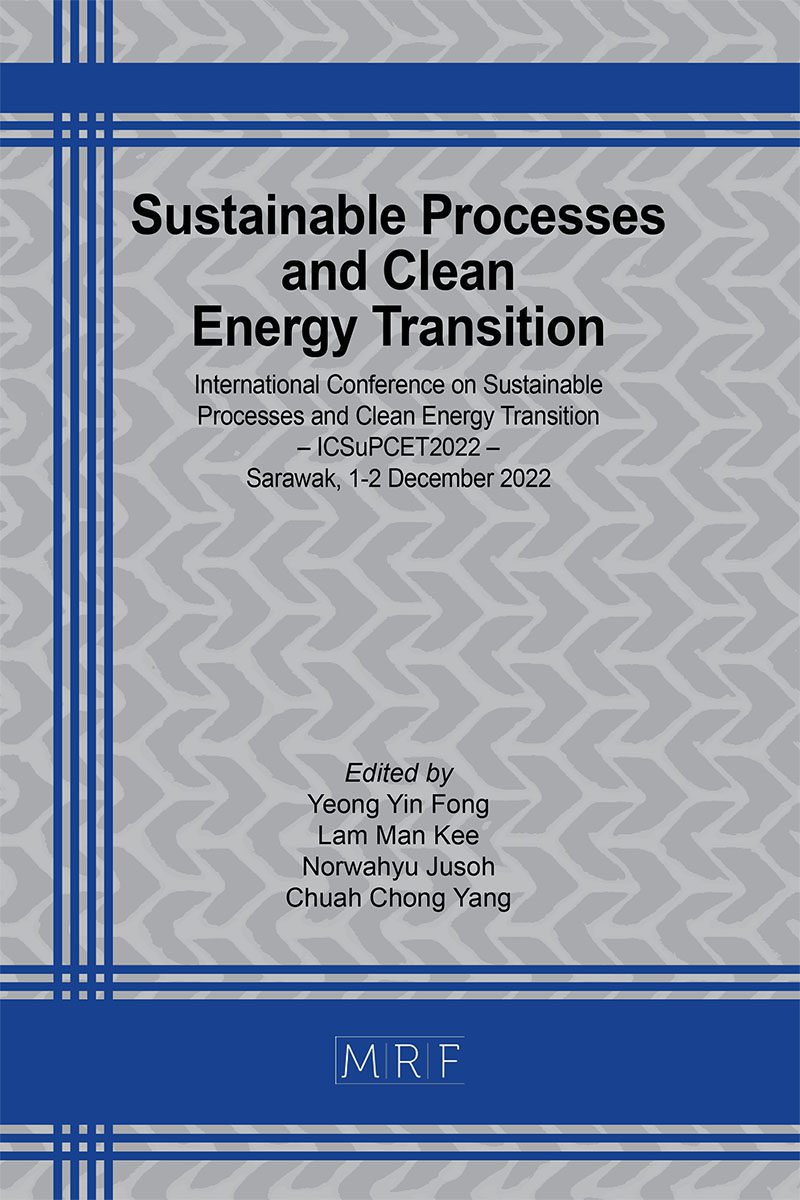An integrated approach for treatment and biomass resource recovery from juice industry wastewater using purple non-sulfur bacteria
NAIM Rashid, SULTAN Shaikh, HAMISH R Mackey, GORDON McKay
download PDFAbstract. This study aims to treat juice industry wastewater and recover resources using purple non-sulfur bacteria (PNSB). Simulated juice wastewater was prepared and used as a feedstock for PNSB. Carbon sources, including sucrose, fructose, glucose, and tris-Na-citrate, were added to different bottles separately and inoculated with a mixed culture of PNSB. Tris-Na-citrate showed higher growth and biomass production (650±70 mg/L) than the other carbon sources. The PNSB growth was associated with the pH change; tris-Na-citrate showed different pH change behavior than the other carbon sources, i.e., it showed a lesser decrease in the medium pH than the others. The effect of substrate (using glucose) concentration on PNSB biomass production was determined in the following experiment. A substrate concentration of 400 mg/L (as COD) showed the highest growth, whereas 800 mg/L (as COD) returned the highest biomass production (776±1 mg/L). Total organic carbon removal (TOC) increased with an increase in substrate concentration. Inorganic carbon removal initially decreased but then increased over the growth period; however, it was also directly correlated with initial substrate concentration. Lastly, the effect of pH on TOC, IC, and COD removal was investigated. A pH of 6.0 or above (up to 8.0) was required to remove organic and inorganic carbon.
Keywords
Purple Non-Sulfur Bacteria, Juice Wastewater, Biomass Production, Carbon Sources
Published online 5/20/2023, 5 pages
Copyright © 2023 by the author(s)
Published under license by Materials Research Forum LLC., Millersville PA, USA
Citation: NAIM Rashid, SULTAN Shaikh, HAMISH R Mackey, GORDON McKay, An integrated approach for treatment and biomass resource recovery from juice industry wastewater using purple non-sulfur bacteria, Materials Research Proceedings, Vol. 29, pp 350-354, 2023
DOI: https://doi.org/10.21741/9781644902516-39
The article was published as article 39 of the book Sustainable Processes and Clean Energy Transition
![]() Content from this work may be used under the terms of the Creative Commons Attribution 3.0 license. Any further distribution of this work must maintain attribution to the author(s) and the title of the work, journal citation and DOI.
Content from this work may be used under the terms of the Creative Commons Attribution 3.0 license. Any further distribution of this work must maintain attribution to the author(s) and the title of the work, journal citation and DOI.
References
[1] O.T. Can, COD removal from fruit-juice production wastewater by electrooxidation electrocoagulation and electro-Fenton processes, Desalination and Water Treatment 52 (2014) 65-73. https://doi.org/10.1080/19443994.2013.781545
[2] N. Rashid, U. Onwusogh, H.R. Mackey, Exploring the metabolic features of purple non-sulfur bacteria for waste carbon utilization and single-cell protein synthesis, Biomass Conversion and Biorefinery (2022). https://doi.org/10.1007/s13399-022-03273-8
[3] S.S. Tak, O. Shetye, O. Muley, et al. Emerging technologies for hydrogen production from wastewater, International Journal of Hydrogen Energy, (2022) https://doi.org/10.1016/j.ijhydene.2022.06.225
[4] B. Ramprakash, P. Lindblad, J.J. Eaton-Rye, et al., Current strategies and future perspectives in biological hydrogen production: A review. Renewable and Sustainable Energy Reviews, 168 (2022) 112773. https://doi.org/10.1016/j.rser.2022.112773
[5] R.J. TeKippe, Treatment and disposal of citrus fruit processing wastes, Journal (Water Pollution Control Federation), 44 (1972) 2001-2012.
[6] T. Hulsen, D.J. Batstone, J. Keller, Phototrophic bacteria for nutrient recovery from domestic wastewater, Water Res, 50 (2014) 18-26. https://doi.org/10.1016/j.watres.2013.10.051.
[7] G. Capson-Tojo, D.J. Batstone, M. Grassino, et al., Purple phototrophic bacteria for resource recovery: Challenges and opportunities, Biotechnology Advances, 43 (2020) 107567. https://doi.org/10.1016/j.biotechadv.2020.107567
[8] A. Tawfik, H. El-Kamah, Treatment of fruit-juice industry wastewater in a two-stage anaerobic hybrid (AH) reactor system followed by a sequencing batch reactor (SBR), Environmental Technology, 33 (2012) 429-436. https://doi.org/10.1080/09593330.2011.579178
[9] C. Amor, M. Lucas, A. Pirra, et al., Treatment of concentrated fruit juice wastewater by the combination of biological and chemical processes, Journal of Environmental Science and Health. Part A, Toxic/hazardous substances and Environmental Engineering, 47 (2012) 1809-1817. https://doi.org/10.1080/10934529.2012.689244































